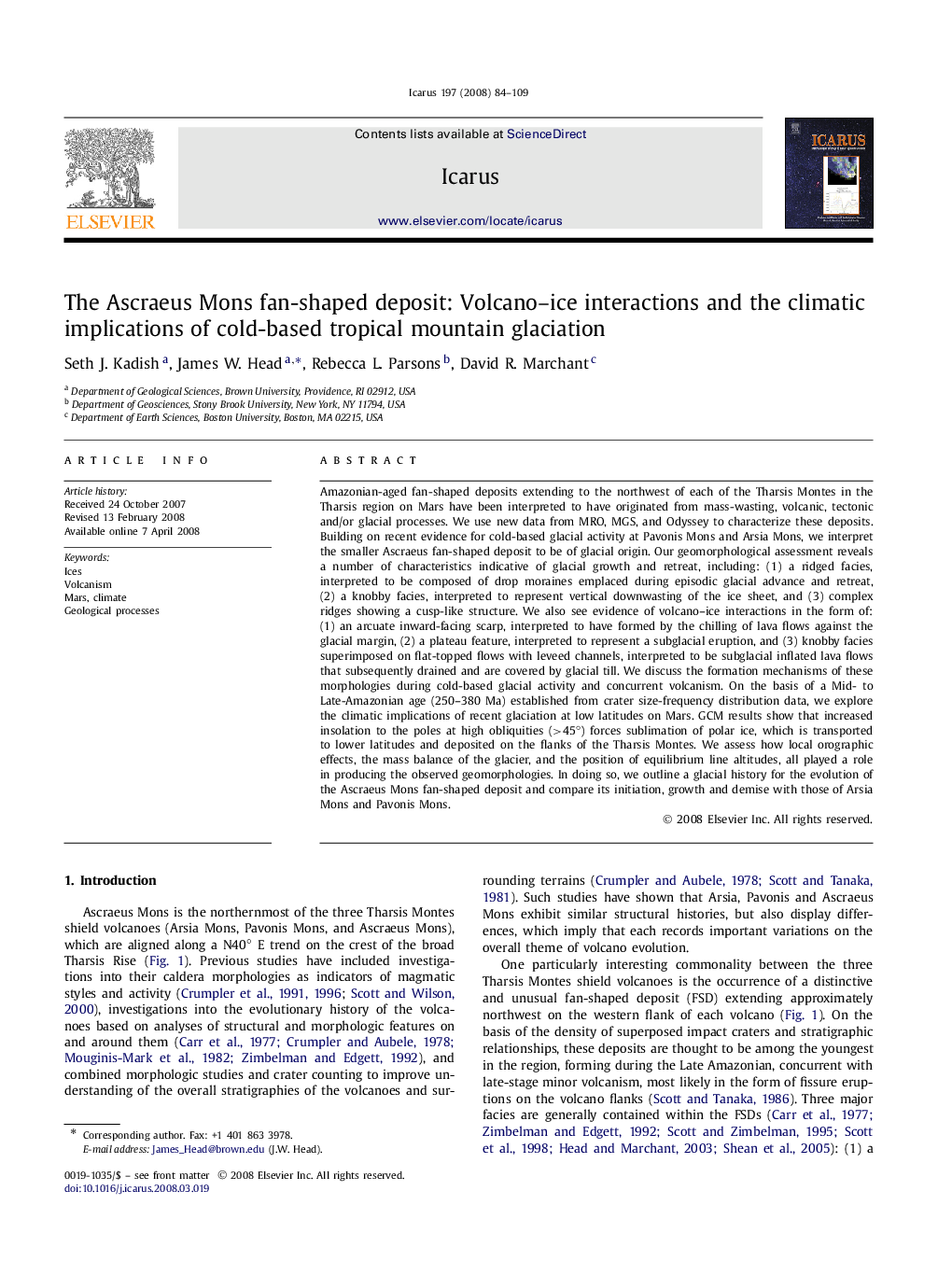| Article ID | Journal | Published Year | Pages | File Type |
|---|---|---|---|---|
| 1775000 | Icarus | 2008 | 26 Pages |
Amazonian-aged fan-shaped deposits extending to the northwest of each of the Tharsis Montes in the Tharsis region on Mars have been interpreted to have originated from mass-wasting, volcanic, tectonic and/or glacial processes. We use new data from MRO, MGS, and Odyssey to characterize these deposits. Building on recent evidence for cold-based glacial activity at Pavonis Mons and Arsia Mons, we interpret the smaller Ascraeus fan-shaped deposit to be of glacial origin. Our geomorphological assessment reveals a number of characteristics indicative of glacial growth and retreat, including: (1) a ridged facies, interpreted to be composed of drop moraines emplaced during episodic glacial advance and retreat, (2) a knobby facies, interpreted to represent vertical downwasting of the ice sheet, and (3) complex ridges showing a cusp-like structure. We also see evidence of volcano–ice interactions in the form of: (1) an arcuate inward-facing scarp, interpreted to have formed by the chilling of lava flows against the glacial margin, (2) a plateau feature, interpreted to represent a subglacial eruption, and (3) knobby facies superimposed on flat-topped flows with leveed channels, interpreted to be subglacial inflated lava flows that subsequently drained and are covered by glacial till. We discuss the formation mechanisms of these morphologies during cold-based glacial activity and concurrent volcanism. On the basis of a Mid- to Late-Amazonian age (250–380 Ma) established from crater size-frequency distribution data, we explore the climatic implications of recent glaciation at low latitudes on Mars. GCM results show that increased insolation to the poles at high obliquities (>45°) forces sublimation of polar ice, which is transported to lower latitudes and deposited on the flanks of the Tharsis Montes. We assess how local orographic effects, the mass balance of the glacier, and the position of equilibrium line altitudes, all played a role in producing the observed geomorphologies. In doing so, we outline a glacial history for the evolution of the Ascraeus Mons fan-shaped deposit and compare its initiation, growth and demise with those of Arsia Mons and Pavonis Mons.
